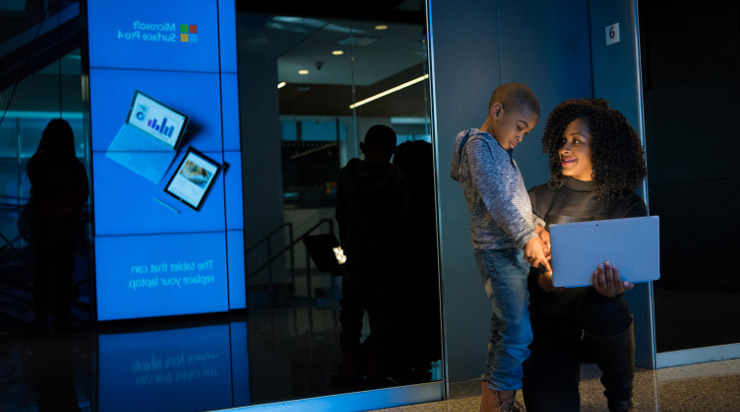Extreme rainfall and flooding have become more frequent and severe due to climate change, causing devastating impacts on lives, infrastructure, and economies worldwide. As weather patterns grow increasingly unpredictable, the challenge of managing and mitigating the effects of such disasters becomes ever more critical. To cope better with extreme rainfall and flooding, a combination of infrastructure investment, urban planning, technology, and community preparedness is essential.
This essay explores strategies to address the growing threat of extreme rainfall and flooding, focusing on proactive measures and sustainable solutions.
Strengthening Infrastructure for Resilience
Investing in resilient infrastructure is a cornerstone of effective flood management. Many existing drainage systems and dams were designed for less extreme weather patterns and are now insufficient to handle current challenges. Upgrading and maintaining this infrastructure is crucial to reducing flood risks.
Modern flood management systems incorporate adaptive designs, such as retention basins, levees, and floodwalls, which help control water flow and protect vulnerable areas. For instance, the Netherlands, a country known for its innovative flood management, uses an extensive system of dikes, storm surge barriers, and water storage facilities to mitigate flooding risks.
In urban areas, permeable pavement and green infrastructure, such as rain gardens and bioswales, can absorb and redirect rainwater, reducing pressure on drainage systems. These solutions not only manage water more effectively but also improve urban environments by adding green spaces.
Enhancing Urban Planning and Zoning Policies
Urban planning plays a critical role in minimizing the impact of flooding. Rapid urbanization has often led to poor land-use planning, with developments encroaching on floodplains and wetlands. These areas, which naturally absorb and store excess water, are crucial for mitigating flooding.
To address this, cities must implement zoning regulations that restrict construction in flood-prone areas and prioritize the preservation of wetlands and natural floodplains. Creating buffer zones around rivers and coastal areas can further reduce the risk of property damage.
Additionally, planning for sustainable urban growth involves integrating flood-resilient designs into new developments. Elevated structures, floating buildings, and water-sensitive urban design can minimize damage and ensure communities are better prepared for extreme weather events.
Leveraging Technology and Data Analytics
Advancements in technology offer powerful tools to predict, monitor, and respond to extreme rainfall and flooding. Early warning systems, powered by real-time data from weather stations and satellite imagery, provide critical alerts that enable timely evacuations and disaster preparation.
Artificial intelligence (AI) and machine learning can analyze vast amounts of meteorological and hydrological data to predict flood patterns with greater accuracy. These insights allow governments and communities to allocate resources more effectively and prepare for specific risks.
For example, flood forecasting systems in India use AI-driven models to predict river flooding and alert vulnerable communities. Similarly, smartphone apps and social media platforms have become vital channels for disseminating real-time flood warnings and safety information.

Promoting Community Preparedness and Education
Communities are the first line of defense against flooding. Empowering individuals with knowledge and resources to prepare for and respond to floods can save lives and minimize damage. Public awareness campaigns, community workshops, and school programs can teach people how to create emergency kits, secure their homes, and evacuate safely when needed.
Community-based flood management initiatives, such as neighborhood flood response teams, foster collaboration and ensure that local knowledge is incorporated into planning and response efforts. Training volunteers to assist in rescue operations and distribute resources during emergencies can further strengthen community resilience.
Restoring and Preserving Ecosystems
Nature-based solutions are increasingly recognized as effective and sustainable strategies for managing extreme rainfall and flooding. Restoring wetlands, mangroves, and forests can significantly reduce flood risks by absorbing and slowing down water flow.
Mangroves, for instance, act as natural barriers that protect coastal areas from storm surges and flooding. Similarly, reforestation efforts in upstream areas can reduce the speed and volume of water reaching downstream communities. These ecological approaches not only mitigate flooding but also provide co-benefits such as biodiversity conservation and improved water quality.
Addressing Climate Change
While mitigation measures can reduce the impact of extreme rainfall and flooding, addressing the root cause—climate change—is essential for long-term solutions. Rising global temperatures intensify rainfall patterns by increasing the atmosphere’s capacity to hold moisture, leading to heavier downpours and more frequent floods.
Reducing greenhouse gas emissions through the transition to renewable energy, sustainable agriculture, and energy-efficient technologies can help slow climate change and its associated impacts. International cooperation is crucial to achieving these goals, as climate change is a global challenge that requires coordinated efforts.
Financing Flood Resilience
Developing ountries, which often bear the brunt of extreme weather events, face significant financial constraints in implementing flood resilience measures. International funding mechanisms, such as the Green Climate Fund, can support these nations in building infrastructure, deploying technology, and enhancing community preparedness.
Private sector involvement is also critical. Insurance companies, for example, can incentivize flood-resilient construction by offering lower premiums for buildings designed to withstand flooding. Public-private partnerships can further accelerate investment in flood management solutions.
Conclusion
Extreme rainfall and flooding are pressing global challenges that demand a proactive and multifaceted response. Strengthening infrastructure, improving urban planning, leveraging technology, and empowering communities are vital steps toward resilience. At the same time, restoring ecosystems and addressing climate change can mitigate future risks and ensure sustainable outcomes.
By adopting an integrated approach that combines innovation, collaboration, and long-term planning, the world can better cope with extreme rainfall and flooding, protecting lives, livelihoods, and ecosystems. The path forward requires collective action, but the tools and strategies to build a more resilient future are already within our reach.





Regardless of which specific tools you utilize, having the right technology in place will allow your new business to get off on the right foot toward lasting success.
Comments are closed.